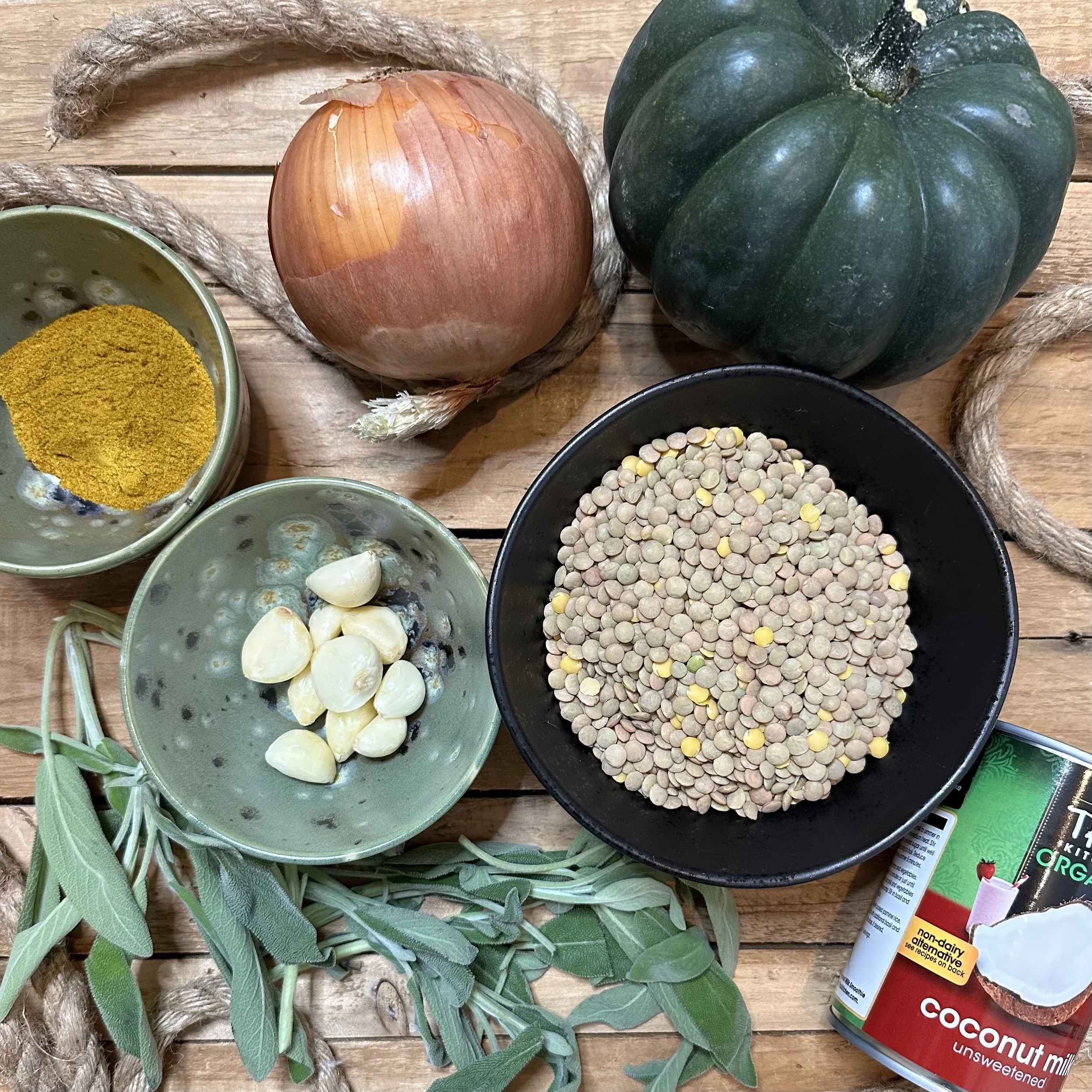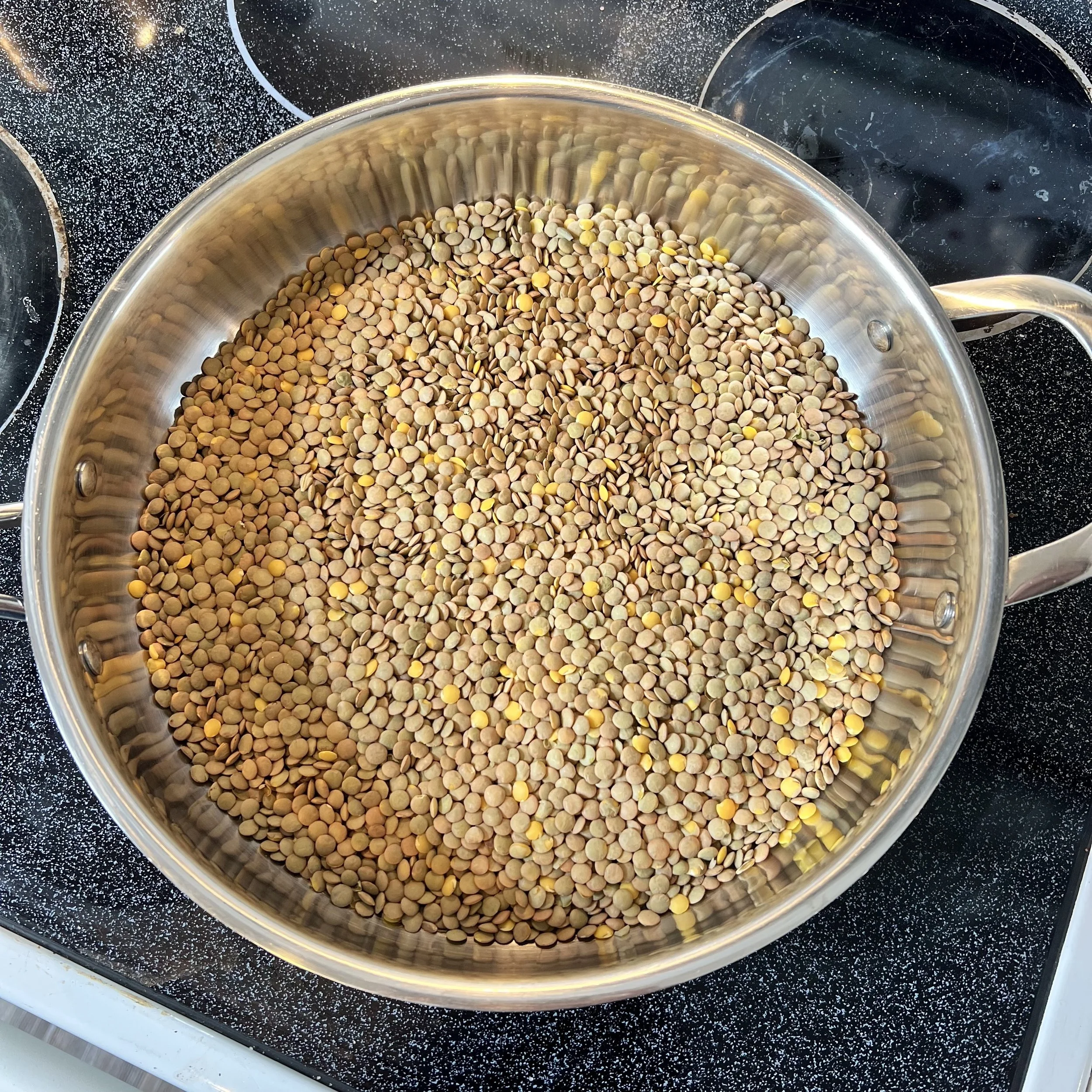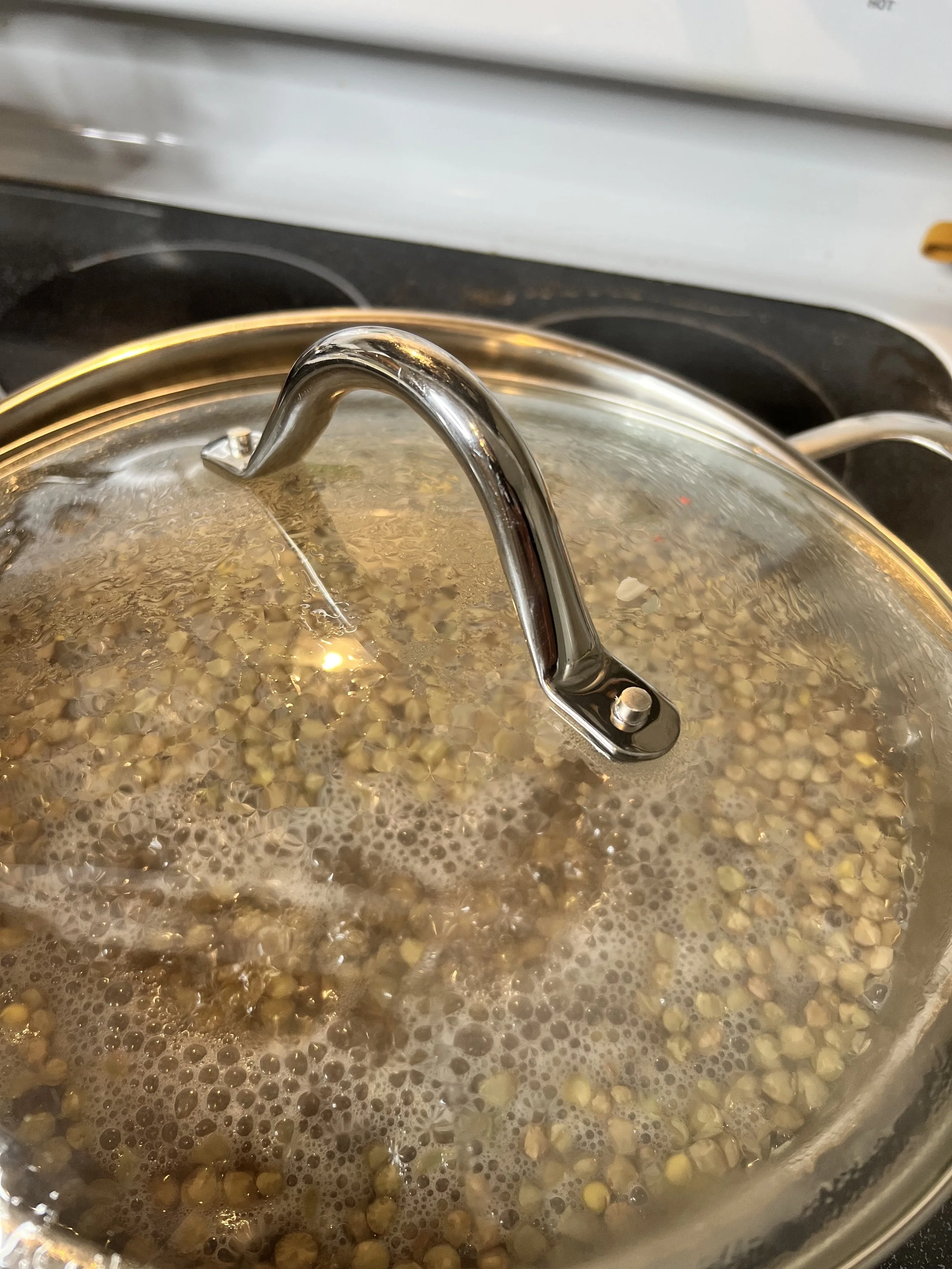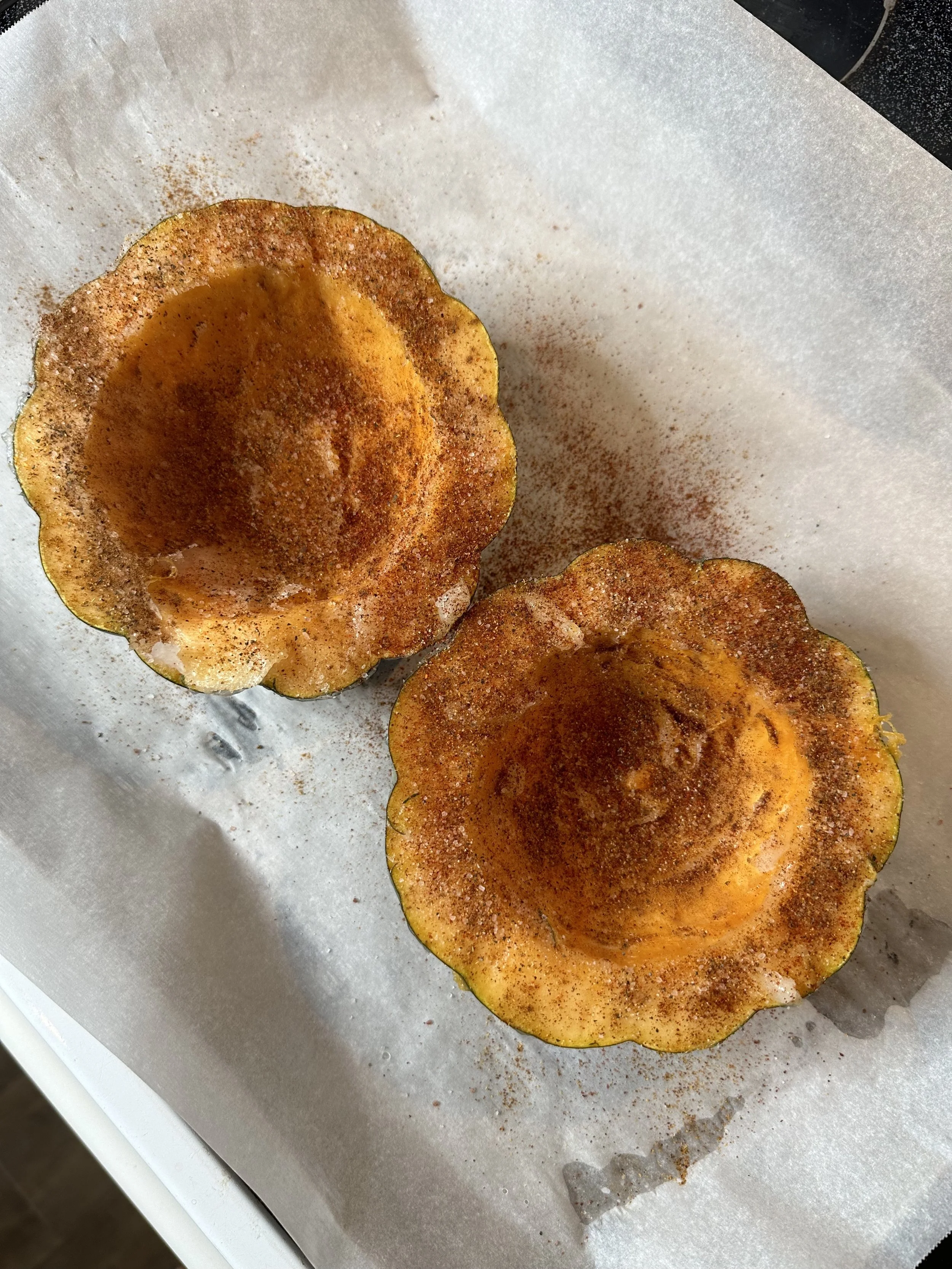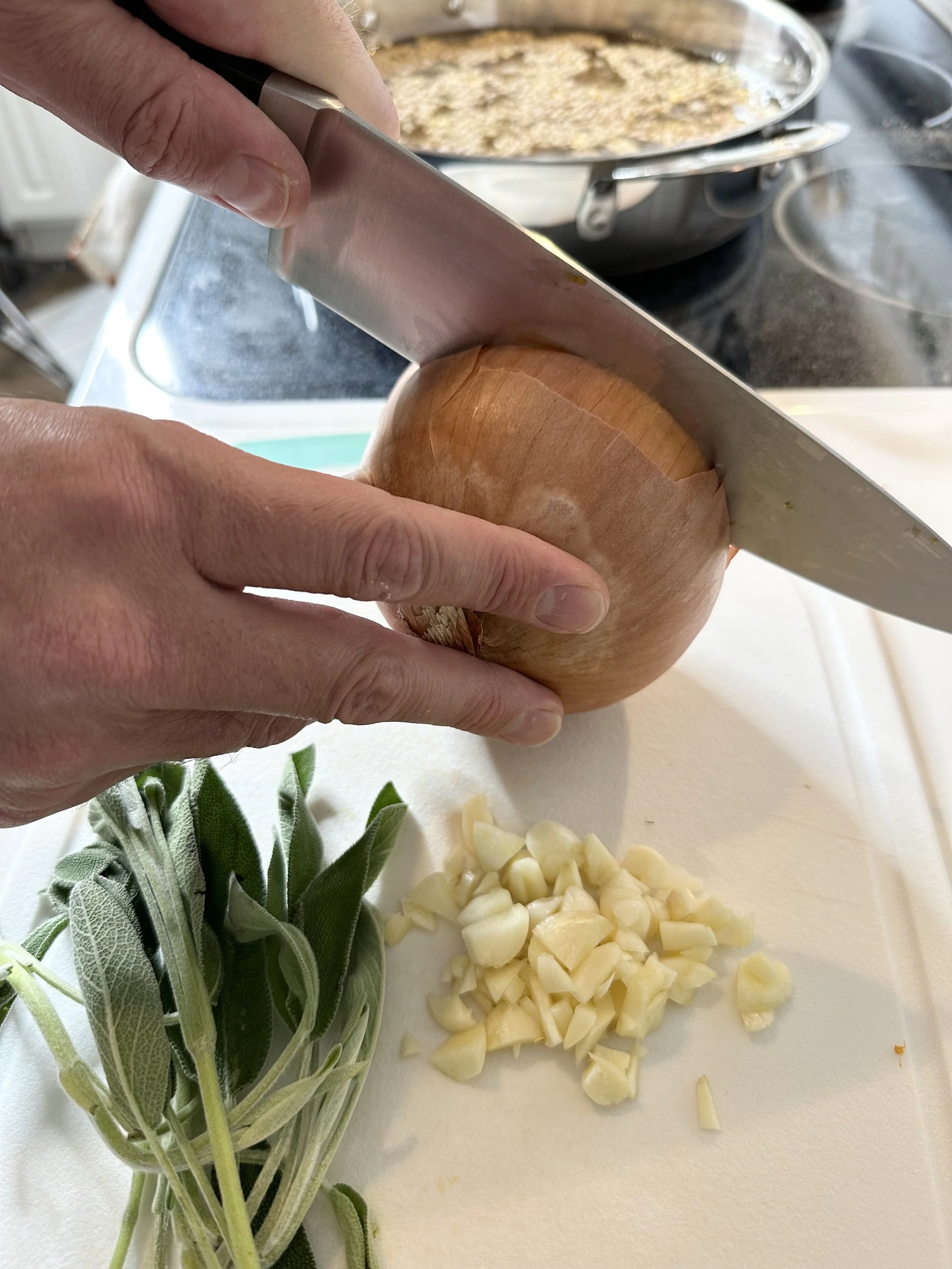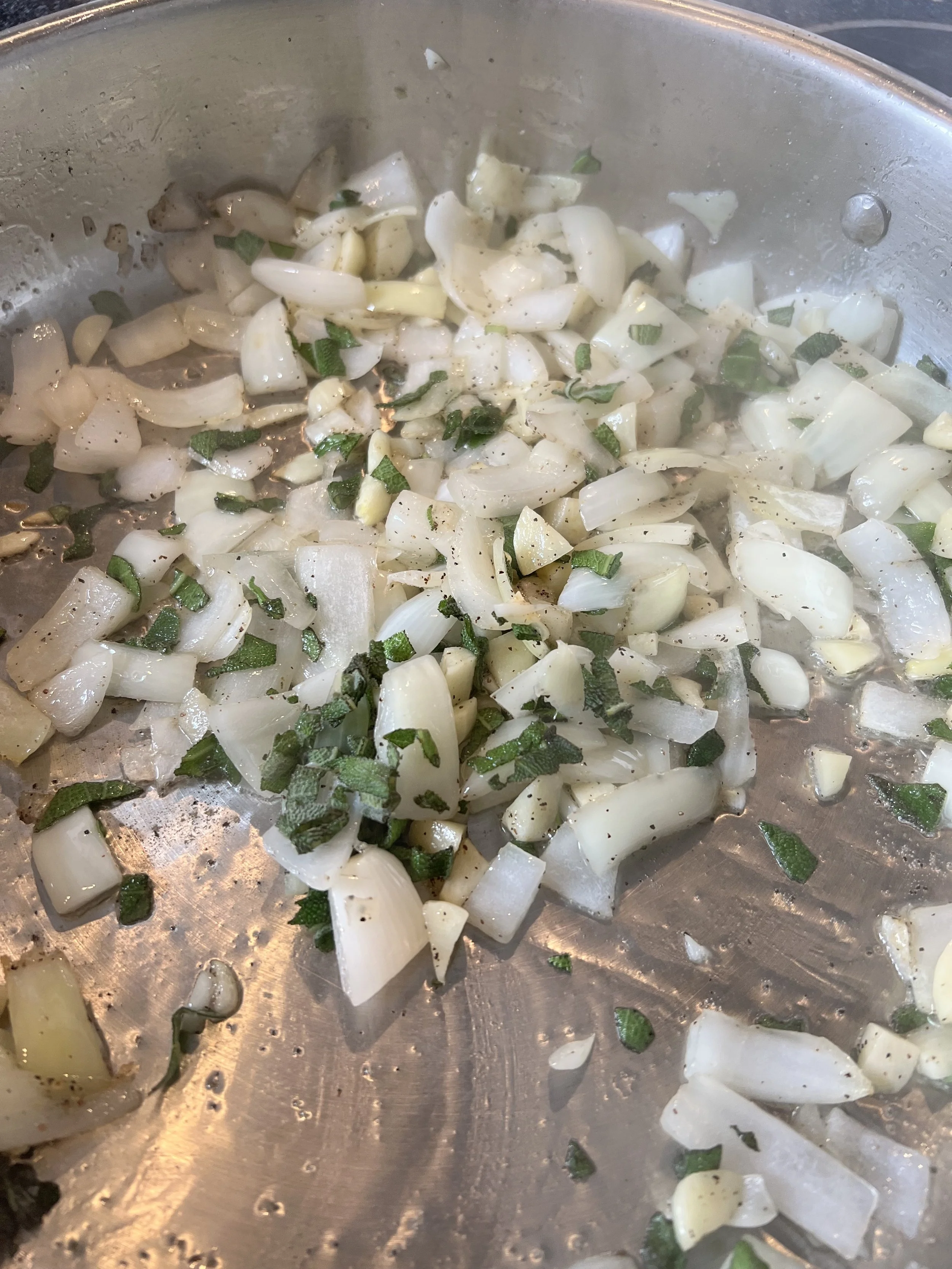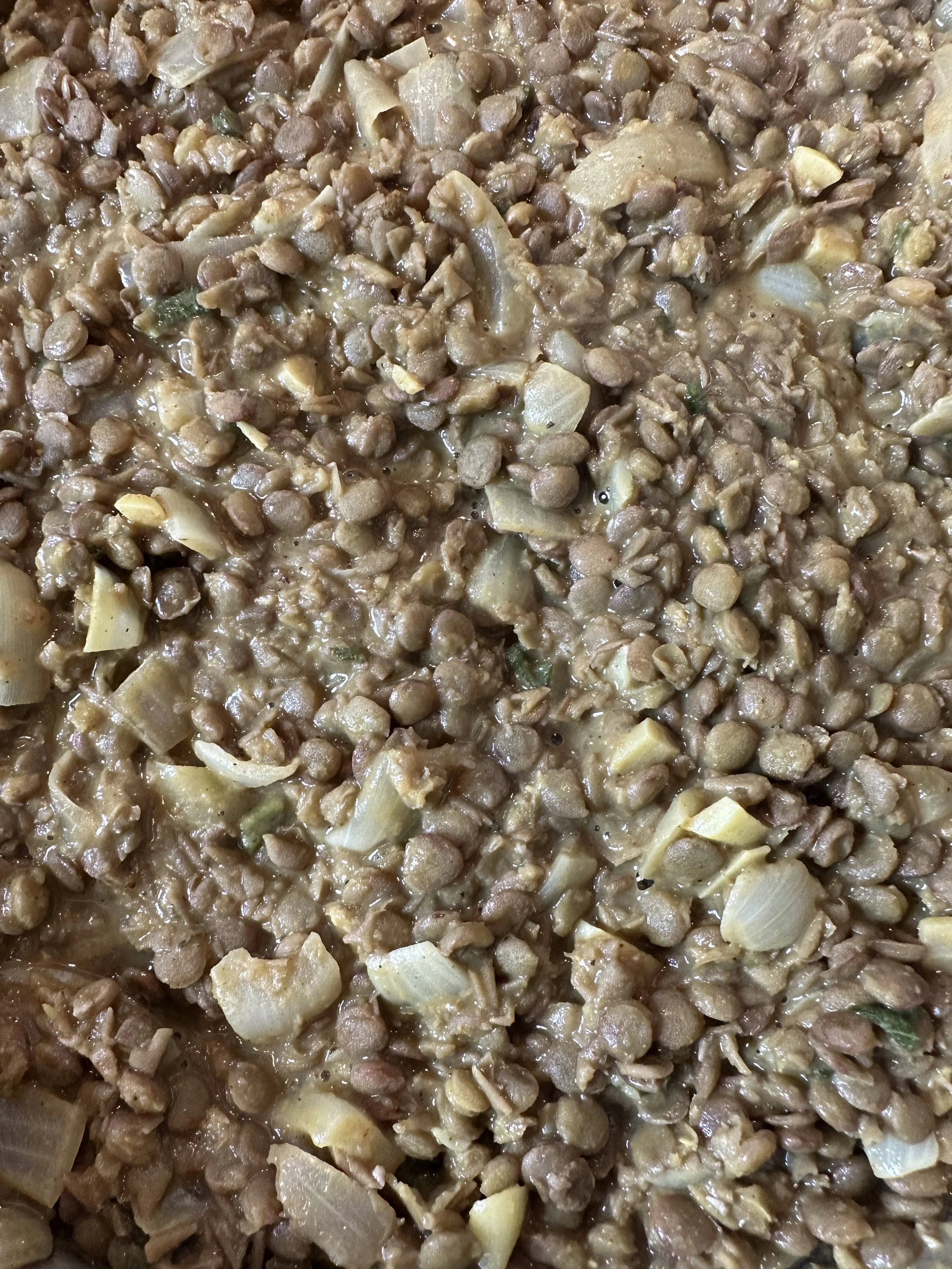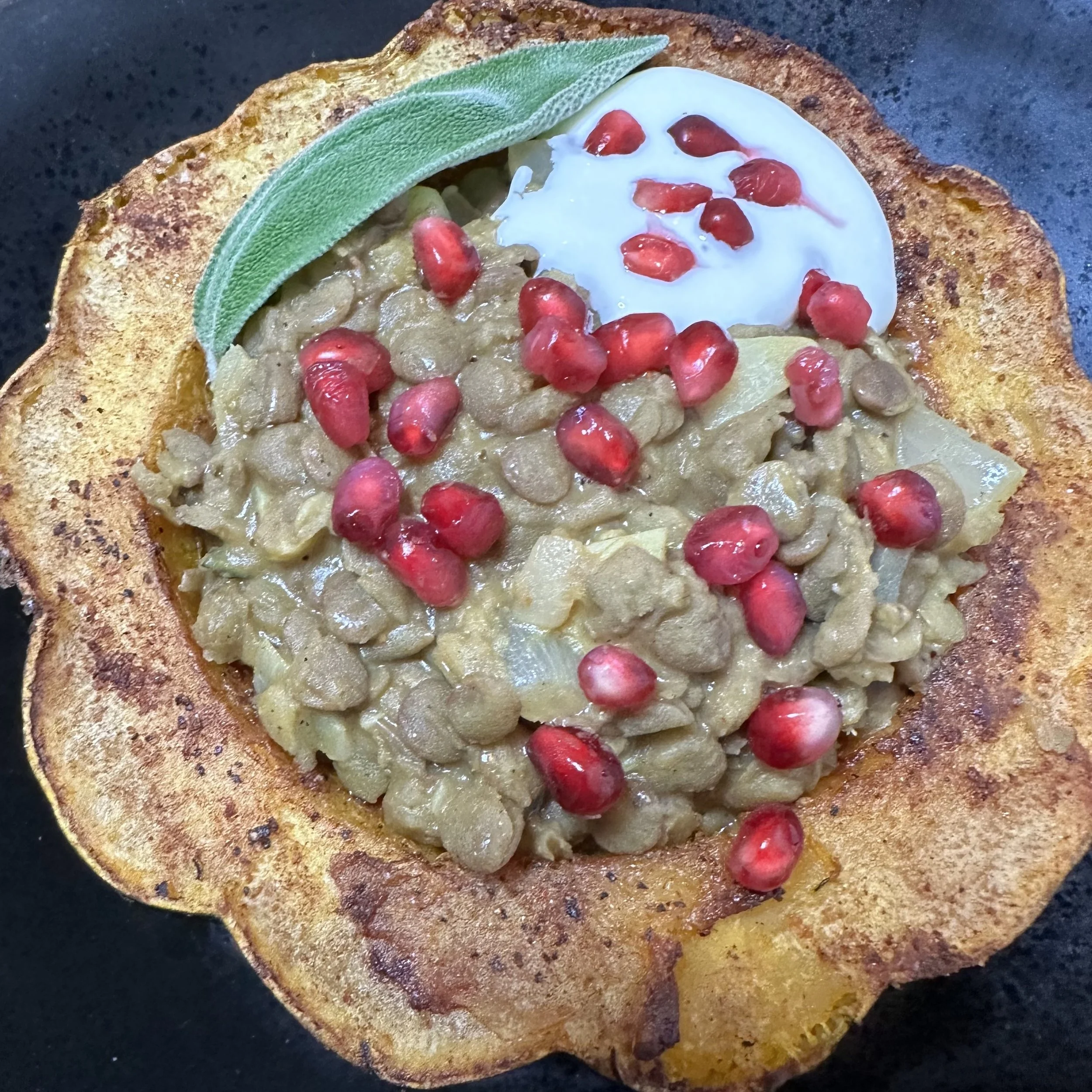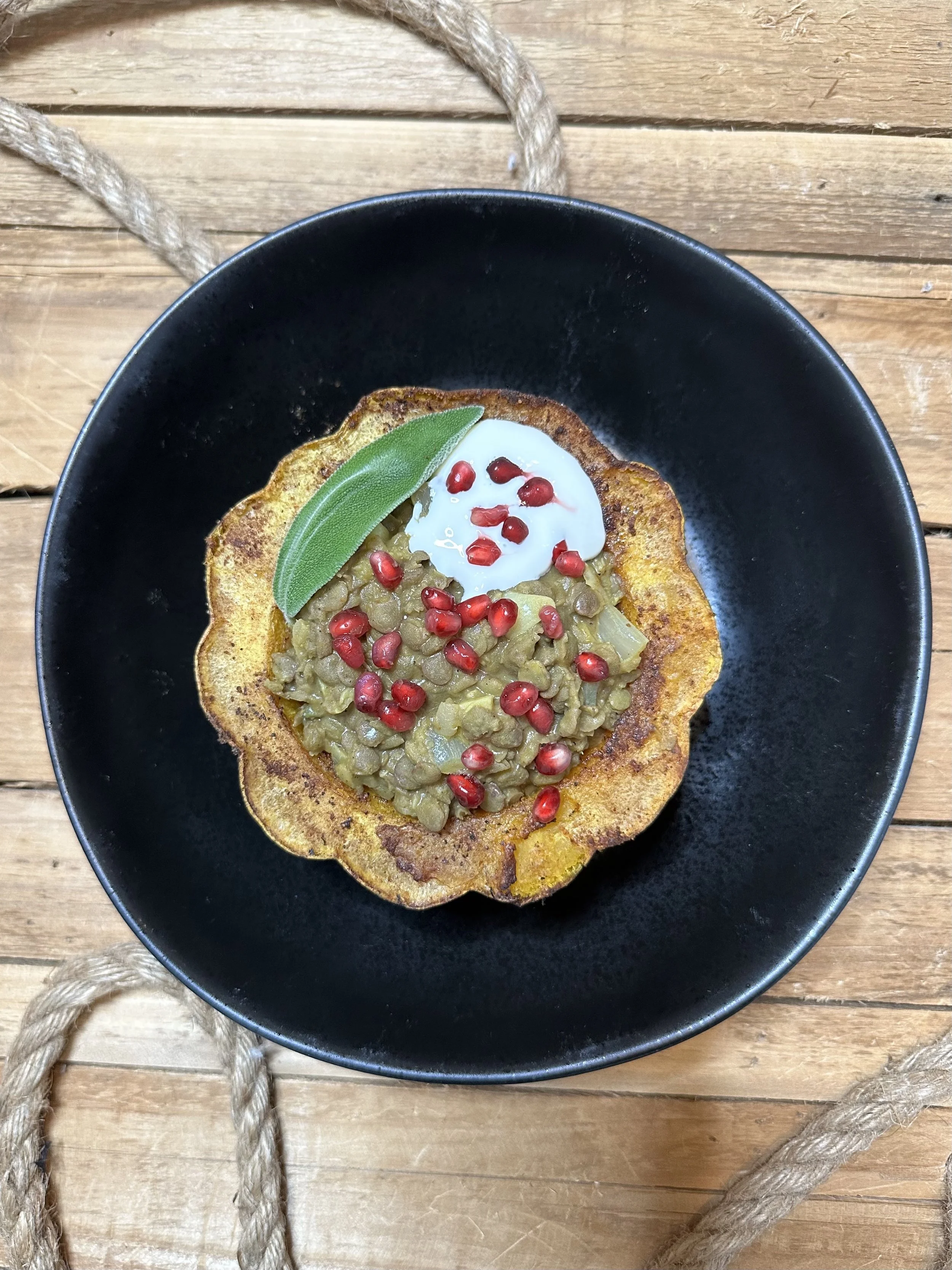Eating With The Seasons (October 2023): Curry Lentils in Acorn Squash Bowl
Fall is quite possibly our favorite season for food. Autumn produce is aromatic and rich in incredible flavors. Plus, the weather is cool and dry enough that we can eat bold, creamy dishes without feeling weighed down or overwhelmed.
If you remember our last recipe, summer was all about light ingredients, fiery spices, and fast cooking with healthy oils to support digestive function in hot weather. As the weather cools, we’re changing up everything: we’re focused more on slow-cooked and steamed preparations that help to preserve yin rather than sautéing in oil, and we’re going to incorporate some truly robust, rich flavors.
This recipe has a special place in our hearts: it was the first dish I ever made for Kelly. I believe that food is one of the best ways to show love for someone, especially a dish like this one: it is filling and has lots of flavor, but it also requires a lot of attention and dedication from the cook. You truly get what you put into this dish: if you cook it quickly it will fall flat, but if you allow things to simmer and marry the flavors in the pan… well, you may end up with something so good you end up marrying the person across the table some years down the road.
One last note: I’m a little loose with the spice directions on this one. I have made this dish many, many times since that first night, and I have never once measured out the amount of salt or curry powder that went into the pan. I gave some rough guidelines here, but let your intuition, your nose, and your tastebuds guide you. Taste the dish constantly during the cooking process and embrace the fact that every batch is going to turn out just a little bit different than the last. Make it work for you!
Ingredients:
· 1 or more acorn squash (try to pick one that doesn’t have too severe of a tip, you want it to sit flat on a plate or dinner bowl). You can serve between 2-6 people with this recipe, with each person getting half a squash.
· 2 cups green lentils
· 1 can coconut milk
· ½ onion, roughly chopped
· 4-6 cloves garlic, roughly chopped
· 1 bunch of fresh sage
· Pomegranate seeds, to garnish
· Greek yogurt
· Salt
· Black pepper
· Cayenne pepper
· Ground cinnamon
· Curry Powder
· Ground smoked paprika
· Ground clove
· Ground cardamom
· Coconut oil
Equipment:
· Chef’s Knife
· Cutting board
· Large spoon
· Parchment paper
· Baking sheet
· Large saucepan
· Strainer
· Can opener
· Spatula
· Slotted serving spoon
Acorn Squash and Curried Lentil Recipe
1. Preheat the oven to 400 degrees Fahrenheit. You’ll come back to it in a few steps.
2. Dump your lentils into a large saucepan and turn on medium heat. Toss the lentils frequently, until the lentils are lightly toasted. They should be warm to the touch, but be careful they don’t burn.
Toasting the lentils adds flavor to the dish— its a subtle touch that makes a big difference!
3. Add 6 cups of water to the saucepan. Bring it to a boil, and then reduce to a simmer. Put a lid on, tilted to vent. Let the lentils cook for about 20 minutes, until soft.
4. With a sharp knife, carefully remove the stem and halve the acorn squash. Dispose of the seeds.
5. Using your (washed and clean!) hand, coat the interior of each squash with cool coconut oil. Make sure the entire Dust the squash with salt, black pepper, cayenne, smoked paprika, and cinnamon— use the picture below as a rough guide of how much seasoning you need.
This isn’t an exact science— you want a solid coating of spices on each squash, but it’s best to go by what looks and feels right.
6. Place the squash inside-down on a parchment paper-lined baking tray. Put the tray in the oven for 20 minutes. After 20 minutes, take the squash out of the oven, flip them over, reduce heat to 375, and cook another 20 minutes or so. You’ll know they’re done when you can effortlessly push a fork into the squash.
7. While the squash and lentils are cooking, chop your onion and garlic. Take about half of the sage bunch and mince it.
I like to give the onions and garlic a rough chop. Cut them up too small and they’ll blend into lentils.
8. By now, your lentils should be cooked. Strain the lentils and set them aside.
9. Using the same saucepan, melt a spoonful of coconut oil. Add the garlic and onion and a pinch of salt. Cook until soft.
10. Add the minced sage, about 3 teaspoons of cayenne pepper, ½ teaspoon of clove, and 1 teaspoon of cardamom to the pan. Move everything around in the pan so the onions and garlic are evenly coated in spices. Remember to taste an onion and see if the spice is right!
Remember— layer your spices as you go! Don’t just dump them all in at once. The goal is to build layers. A pinch of salt as you go won’t hurt.
11. Add coconut milk and 2 tablespoons of curry powder to the pan. Stir thoroughly, and then bring to a boil. Reduce to a simmer.
12. Did you forget about the squash? You should check on it! If they’re done, turn off the oven and leave them in there while the lentils finish.
13. Taste the curry sauce— if it still has obviously powdery spices, it needs more time. Now is a great time to adjust the salt and pepper levels. You’ll need to simmer it for at least 10 minutes, but don’t walk away— stand by and stir it every so often.
14. Once the sauce is tasting great, add the lentils. Use a spatula to stir and fold the lentils into the pan. Cook them over medium-low heat, and continue to flip sections of the pan so you don’t burn them. Everything will come together and be a bit, well, mushy, for lack of a better word. Give it a final taste to make sure the lentils are done and the spices are right.
This is what you’re going for.
15. Place one half of the squash inside-up in a dinner bowl or on a plate. Using a serving spoon, scoop the lentils into the center of the squash. Use a small spoon to put some Greek yogurt on top, sprinkle with pomegranate seeds, and garnish with a sage leaf.
Make it pretty!
Remember to eat it while it’s hot— don’t take too many pictures.
Note: You will have a lot of lentils left over, but it doesn’t really work to try and halve the recipe. I’ve tried it. Put the leftovers in the fridge, they’re a great healthy option for meal prepping. Try them out as a salad topper, over rice, or even as a taco filling. Get creative and enjoy!
